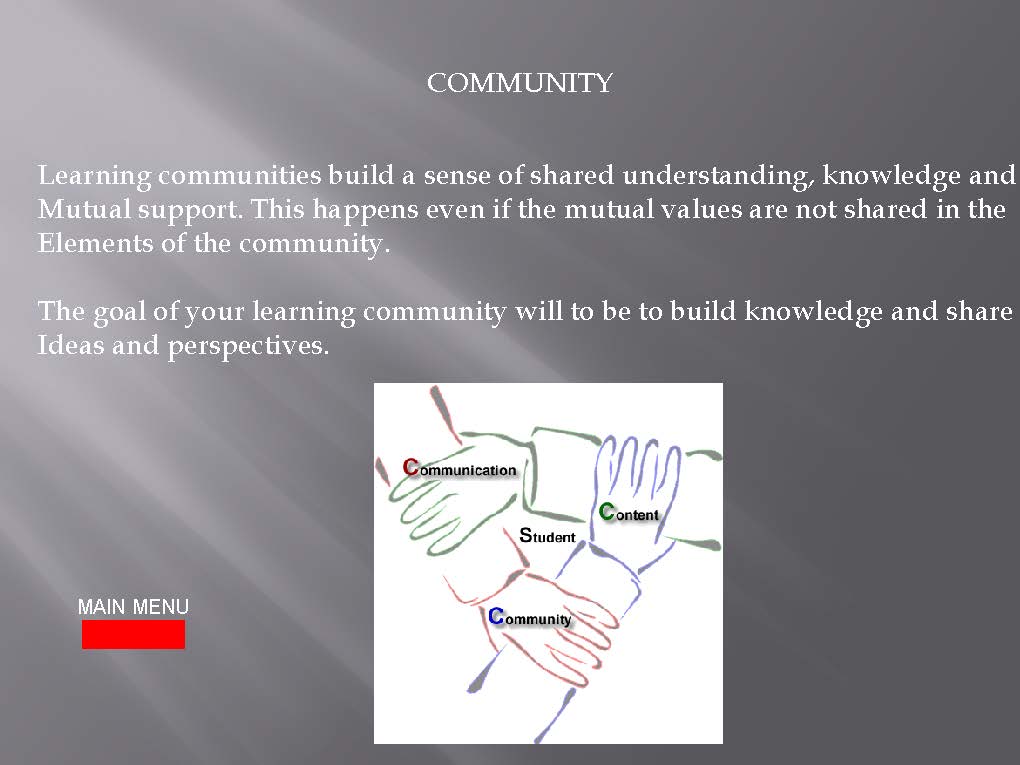As this course
draws to an end, I have been asked to reflect on the future of distance
learning. As with any changes in today’s society, there will always be people
who believe that change is not necessary or change does not bring about
improvements. Yet as history has taught us change is inevitable if we as a
society want to continue to grow and prosper, we must learn to embrace change.
I believe distance learning is an important evolution in education that is not
only being accepted but is thriving in our society despite some cynics who will
only accept the face to face traditional course as an effective learning
environment, but I do not think that this will stop the growth of distance
learning.
Future Perceptions:
Distance
education is a dramatic idea. It may change, even restructure education but
only if it is possible to make the experience of the distance learner as complete,
satisfying, and acceptable as the experience of the local learner (Simonson, Smaldino, Albright, & Zvacek, 2012).
Dr. George Siemens maintains that growing acceptance of distance learning will
be occur because the public will naturally increase usage of online
communication tools, and become more comfortable conversing in an electronic
format. As new technology makes steady gains in popularity, the use of online
communication and eLearning technologies is expected to increase dramatically
in the next decade. As stated by (Simonson, et. al 2012), “students of
all ages are engaging in distance education. I predict that in the next 5
to10 years, as more technological resources become available in regards to eLearning,
more students will become involved in learning at a distance. Instructional
designers should strive to understand eLearning technologies and technological approaches
that will make the experience of distant learner positive and equivalent to the
traditional classroom.
How can
an instructional designer, be a proponent for improving societal perceptions of
distance learning?
When designing distance education the learners characteristics,
needs, and expectations should all be taken into consideration since these
factors influence a learners motivation to learn, and ultimately the learner
success. In addition to factors that should be considered for designing
effective instruction in general, several unique elements exist when
considering the diversity of the distance learner. In order for an
instructional designer to be a proponent for improving societal perceptions of
distance learning, they must consider differences in age, experience, attitude,
general abilities, prior knowledge, personal responsibilities, and learning
styles.
As a future
instructional designer of distance learning, understanding the design
principles of multimedia and how to use the various mechanisms of text,
graphics, audio, blogs, wikis, discussion forums, podcast, media sharing
sites, animation, video, and web2.0 technologies successfully will help in
motivating the distance learner and enable learning in a technological environment.
In applying instructional design models such as “ADDIE” I will be able to effectively
create courses that
have the educational experiences equivalent to the experiences of the
traditional learner. In this way, the public and society at large
will see that online learning can be effective and beneficial to learning.
Final
Thoughts:
In the past
week I had an opportunity to interview three people in regards to their personal
views of online learning and/or distance learning. I was very surprised that their
views were clouded in myths and stereotypes in regards to socialization,
communication, and learning in general in regards to online and distance
learning. Prior to this experience, I thought that my contribution to educating
people on the benefits of distance education was helping to sway the opinions
of people close to me; I now realize that I need to work harder at it.
I perceive that
as more people begin to understand and explore the advantages and benefits of
distance learning, for example, the convenience of learning in your own home,
and the ability to tailor your own learning schedule, more people will move towards
this form of learning.
In conclusion,
educational professionals and instructional designers are crucial to the growth
of distance education. As people continue to become more comfortable in the use
of eLearning technologies, the benefits and advantages of distance learning
will become more appealing and more widely accepted. I envision distance
education as a leading force in the future education for not just adults but
all ages by promoting innovative learning beyond traditional classroom
methods. As I continue my journey towards becoming an instructional
designer, I will keep in mind the importance of clear and open communication
between myself and all participants within the learning environment, and adhere
to a strategic design process which includes critical elements of analysis,
design, assessment, and evaluation in order to design effective learning environments.
Simonson, M., Smaldino, S., Albright, M., & Zvacek, S. (2012). Teaching and learning at a distance: Foundations of distance education (5th ed.) Boston, MA: Pearson.
Simonson, M., Smaldino, S., Albright, M., & Zvacek, S. (2012). Teaching and learning at a distance: Foundations of distance education (5th ed.) Boston, MA: Pearson.

















